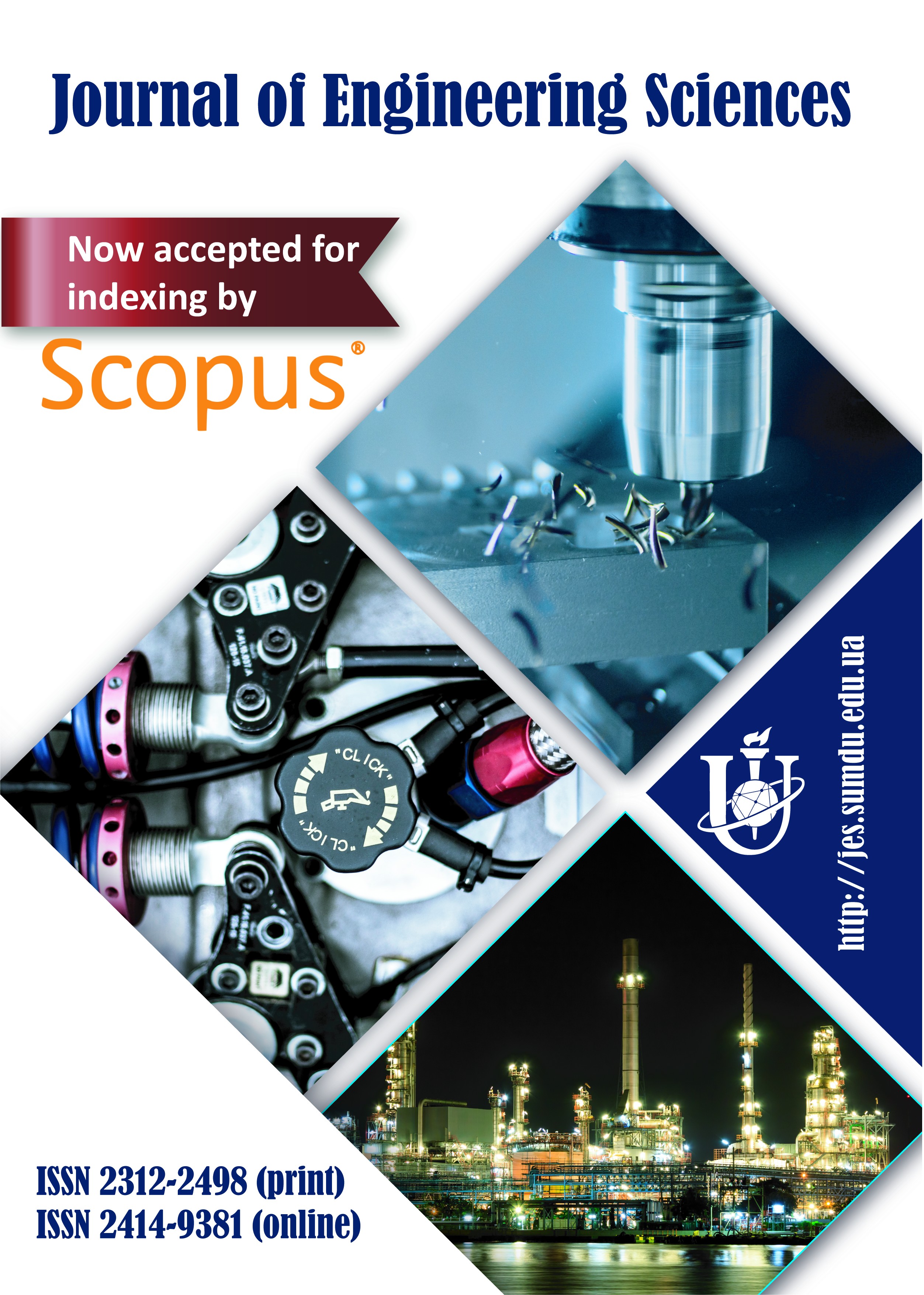Investigation of the Blockchain Structure for Hydroxyapatite-Based Scaffolds
Author(s): Chernobrovchenko V. S.1*, Dyadyura K. О.1, Panda A.2
Affiliation(s):
1 Sumy State University, 2, Rymskogo-Korsakova St., 40007 Sumy, Ukraine;
2 Faculty of Manufacturing Technologies, Technical University of Košice, 080 01 Prešov, Slovakia.
*Corresponding Author’s Address: [email protected]
Issue: Volume 8, Issue 2 (2021)
Dates:
Submitted: July 15, 2021
Accepted for publication: December 10, 2021
Available online: December 14, 2021
Citation:
Chernobrovchenko V. S., Dyadyura K. О., Panda A. (2021). Investigation of the blockchain structure for hydroxyapatite-based scaffolds. Journal of Engineering Sciences, Vol. 8(2), pp. C30-C35, doi: 10.21272/jes.2021.8(2).c5
DOI: 10.21272/jes.2021.8(2).c5
Research Area: MANUFACTURING ENGINEERING: Materials Science
Abstract. Regenerative biomechanics provides exciting technologies for developing functional substitutes, intending to restore and regenerate damaged tissues and organs. Scaffolds are in great demand. However, there are risks of biocompatibility when using scaffolds. Each bone substitute has its chemical composition, and other characteristics have advantages and disadvantages. Reproducibility, data sharing, privacy concerns, and patient participation in clinical trials are significant problems in modern clinical trials. In the era of the Internet, data is collected constantly. Today we need applications that ensure the privacy of users’ data. Blockchain technology helps to compensate for severe data management problems (e.g., patient recruitment, ongoing monitoring) in clinical trials (CT). The article examines the principles of blockchain operation and approaches to bone substitutes’ design. Based on this data, a blockchain model for biomaterial surgery has been created, facilitating interaction between the parties and reducing errors.
Keywords: life cycle assessment, clinical trials, biomaterial, implant, risk assessment, transaction.
References:
- Sukhodub, L. F., Diadiura, K. O. (2018). Design and fabrication of polymer-ceramic nanocomposites materials for bone tissue engineering. Journal of Nano- and Electronic Physics, Vol. 10(6), 06003, doi: 10.21272/jnep.10(6).06003.
- Bouler, J. M., Pilet, P., Gauthier, E. O. (2017). Verron biphasic calcium phosphate ceramics for bone reconstruction: A review of biological response. Acta Biomaterialia, Vol. 53, pp. 1-12, doi: 10.1016/j.actbio.2017.01.076.
- Rustom, L., Boudou, T., Lou, S., Pignot-Paintrand, I., Nemke, B. W., Lu, Y., Markel, M. D., Picart, C., Johnson, A. J. W. (2016). Micropore-induced capillarity enhances bone distribution in vivo in biphasic calcium phosphate scaffolds. Acta Biomater, Vol. 44, pp. 144-154, doi: 10.1016/j.actbio.2016.08.025.
- Miclăuş, T., Valla, V., Koukoura, A., Nielsen, A. A., Dahlerup, B., Tsianos, G.-I., Vassiliadis, E. (2020). Impact of design on medical device safety. Therapeutic Innovation and Regulatory Science, Vol. 54(4), pp. 839-849, doi: 10.1007/s43441-019-00022-4.
- Omar, I. A., Jayaraman, R., Salah, K., Simsekler, M. C. E., Yaqoob, I., Ellahham, S. (2020). Ensuring protocol compliance and data transparency in clinical trials using Blockchain smart contracts. BMC Medical Research Methodology, Vol. 20(1), pp. 1-17.
- Benchoufi, M., Ravaud, P. (2017). Blockchain technology for improving clinical research quality. Trials, Vol. 18(1), pp. 1-5.
- Angeletti, F., Chatzigiannakis, I., Vitaletti, A. (2017). The role of blockchain and IoT in recruiting participants for digital clinical trials. 25th IEEE International Conference on Software, Telecommunications and Computer Networks (SoftCOM), pp. 1-5.
- Da Silva Presa, R. M. (2019). Development of a novel 3D-Scaffold to promote bone regeneration. Available online: https://mechse.illinois.edu/people/profile/ajwj.
- Martinez-Marquez, D., Mirnajafizadeh, A., Carty, C. P., Stewart, R. A. (2018). Application of quality by design for 3D printed bone prostheses and scaffolds. PLoS One, Vol. 13(4), e0195291.
- Tajurahim, N. A. N., Mahmood, S., Saman, M. Z. M., Ngadiman, N. H. A. (2021). Life cycle assessment of 3D-printed bone tissue engineering scaffolds, doi: 10.21203/rs.3.rs-497484/v1.
- Assad, M., Jackson, N. (2019). Biocompatibility evaluation of orthopedic biomaterials and medical devices: A review of safety and efficacy models. Encyclopedia of Biomedical Engineering, Vol. 2019, pp. 281-309, doi: 10.1016/B978-0-12-801238-3.11104-3.
- Sandoval, E. (2019). Risk-Based Design Control Process to Promote a Quality by Design Infrastructure in the Medical Device Industry. Ph.D. Thesis, California State University, Dominguez Hills.
- Omar, I. A., Jayaraman, R., Salah, K., Yaqoob, I., Ellahham, S. (2021). Applications of blockchain technology in clinical trials: Review and open challenges. Arabian Journal for Science and Engineering, Vol. 46(4), pp. 3001-3015.
- Chanchaichujit, J., Tan, A., Meng, F., Eaimkhong, S. (2019). Blockchain technology in healthcare. Healthcare 4.0, pp. 37-62.
- Yue, X., Wang, H., Jin, D., Li, M., Jiang, W. (2016). Healthcare data gateways: found healthcare intelligence on blockchain with novel privacy risk control. Journal of Medical Systems, Vol. 40(10), pp. 1-8.
- Ji, Y., Zhang, J., Ma, J., Yang, C., Yao, X. (2018). BMPLS: Blockchain-based multi-level privacy-preserving location sharing scheme for telecare medical information systems. Journal of Medical Systems, Vol. 42(8), pp. 1-13.
- Al Omar, A., Bhuiyan, M. Z. A., Basu, A., Kiyomoto, S., Rahman, M. S. (2019). Privacy-friendly platform for healthcare data in cloud based on blockchain environment. Future Generation Computer Systems, Vol. 95, pp. 511-521.
- Tang, Y. M., Ho, G., Jack, W. U. (2018). Integrating blockchain for improving data sharing in implant surgery. Proceedings of ISER 147th International Conference, pp. 27-31.







